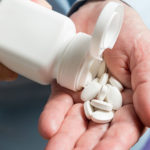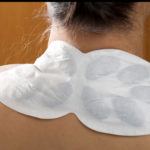Migraine Headaches, Without Aura

What Are Migraine Headaches?
Migraines are severe, disabling headaches that affect some 37 million men, women and children in the United States. Untreated, these headaches can last for hours and sometimes as long as three days. Fortunately, medical management of migraine has improved dramatically since the introduction in the 1990s of drugs that specifically target migraine pain. Some patients also benefit from taking other medications that can prevent the headaches, although finding the right one for an individual can be a lengthy process of trial and error. An integrative approach – combining the best of conventional treatment with evidence-based natural approaches – can help reduce the frequency and severity of attacks.
What Are The Symptoms Of Migraine Headaches?
The classic migraine is a one-sided severe, throbbing headache that may be accompanied by nausea, vomiting, and sensitivity to light and sound.
Before a migraine begins, affected individuals can experience premonitions or “prodromes” that can occur several hours or even a day or two before the headaches begin. While they indicate that a migraine is coming, they are not considered auras (visual and sensory changes that precede a headache). These premonitions may include feelings of elation or intense energy, carbohydrate cravings, excessive hunger or thirst, and sleepiness, irritability or depression.
Once a migraine begins, headache pain worsens with physical activity and usually interferes with normal functioning. The frequency and intensity of migraine vary from person to person. The headaches can occur from once or twice a year to several times a month.
What Are The Causes Of Migraine Headaches?
The exact cause of migraine isn’t fully understood. There are no true nerves for pain in the area where the headaches are experienced. Pain and discomfort of this nature ultimately arise from rapid dilation and possible inflammation of blood vessels in the head.
Some researchers believe migraines originate from functional changes in the trigeminal nerve, one of the cranial nerves that houses a major pain pathway. Others think these headaches are due to imbalances in the neurotransmitter serotonin, which regulates pain messages transmitted through the trigeminal nerve.
The vascular instability that is the immediate cause of migraine is influenced by many factors. Food sensitivity can play a role – specific foods trigger attacks in many people who have these headaches. Hormonal fluctuations can be a factor in women. While pregnancy tends to prevent migraines, birth control pills can trigger them. Both stress and heredity play a role.
Typical food triggers include aged cheeses and processed meats (particularly pepperoni and hot dogs); peanuts; bread and crackers containing cheese as well as any strong-flavored cheeses; broad beans, peas, and lentils; as well as beverages containing caffeine and chocolate. Wine is another culprit (red usually is more problematic than white). Fermented foods including soy sauce and miso have been implicated, as have some fish, including sardines, anchovies, and pickled herring. Other foods linked to migraines include avocados, bananas, citrus fruits, figs, raisins, red plums, and raspberries.
Food additives that may play a role include nitrates and nitrites (in processed meats), yellow food coloring, and monosodium glutamate (MSG), used in some canned or processed foods, as well as in Chinese foods and soy sauce.
Non-food migraine triggers include fatigue, lack of sleep (or sleeping too much), missing meals, changes in barometric pressure, and changes in altitude. Strong odors, such as those of paint, gasoline or heavy perfumes, and bright flashing lights can also trigger migraines. But not everyone has a clear trigger for the headaches.
Prevention Of Migraine Headaches
New research from Italy has shown that for obese migraine sufferers, weight loss is associated with significant reductions in the frequency, severity of pain, and disability associated with migraines, as well as the duration of the attacks. This finding came from an analysis of 473 patients in 10 studies by researchers from Italy’s University of Padova. The improvements weren’t associated with the degree of obesity at the outset or the amount of weight lost.
Certain medications can help reduce the frequency, severity and duration of migraines. These include beta-blockers, calcium channel blockers and other anti-hypertensives that can help regulate blood vessel tone and activity. These drugs also may increase the effectiveness of other medications used to relieve migraines. Certain antidepressants can help prevent migraines, as can the anti-seizure drugs Depakote, Neurontin and Topamax. Side effects may include dizziness, drowsiness, lightheadedness, stomach upset, and weight gain or even weight loss (in the case of Topamax). Doctors may recommend taking preventive medications daily if migraines aren’t being adequately treated or if a predictable, but unavoidable, trigger is approaching.
Acupuncture may be helpful in reducing the frequency of migraines without aura. A study from China published in JAMA Internal Medicine in April 2017 found that when performed by licensed acupuncturists with at least five years of training and four or more years of clinical experience, acupuncture led to a decline in the average number of migraines from 4.8 per month to three per month, 20 weeks after receiving five acupuncture treatments weekly.
Conventional Treatment Of Migraine Headaches
Non-steroidal anti-inflammatory drugs such as aspirin and ibuprofen are considered first-line treatments for migraines. Some over-the-counter drugs marketed specifically for migraines contain these compounds in combination with acetaminophen and caffeine. They can be effective for mild or intermittent headaches, but if taken frequently or for long periods of time, can lead to ulcers, gastrointestinal bleeding and “rebound headaches” – a headache that is just as strong, or worse, that develops when the medicine is withdrawn.
A number of prescription medications are used to relieve or prevent migraines. Triptans are very effective when taken at the beginning of an attack. They come in pill form but also are available in nasal spray and injectable forms. Although triptans are drugs of choice for severe migraines, they have side effects that should not be discounted, especially in patients with heart disease or high blood pressure. Triptans cause blood vessels to constrict, which counters the dilation that causes the pain. Side effects can include nausea, dizziness and muscle weakness. Rarely, if vessels narrow too much, stroke and heart attack can occur in susceptible individuals. Until an individual’s response to triptans is established, it is important to be under close medical supervision when using these drugs.
The drug ergotamine combined with caffeine has been used to prevent and treat migraines for more than 60 years. These preparations work by preventing blood vessels in the head from dilating. While they are less expensive with fewer side effects than triptans, they are not as effective.
In 2018 the FDA cleared a handheld vagus nerve stimulator for use in treating migraines in adults. It is meant to be placed over the vagus nerve in the neck within 20 minutes of the onset of pain. Studies have shown it to be effective.
In January 2019 the FDA approved TOSYMRA, a nasal spray for treating migraine with or without aura in adults. In one of the studies that led to approval, 43.8 percent of participants were pain free two hours after using the spray, and other symptoms, including nausea and sound and light sensitivity, had resolved among 70.7 percent of them.
Anti-nausea drugs are also commonly used in combination with other treatments, and medications that combine the sedative butalbital with aspirin or acetaminophen have been used in the past to treat migraine attacks. Some combinations include caffeine. These medications pose a high risk of rebound headaches and withdrawal symptoms and should be used infrequently.
In addition, medications containing narcotics such as codeine and hydrocodone often are used to treat severe migraine pain (often in urgent care settings or when people can’t tolerate triptans or ergotamines). These drugs are habit-forming, can cause rebound headaches – and should be used only as a last resort.
What Does Dr. Weil Recommend For Migraine Headaches?
Dr. Weil first recommends eliminating consumption of coffee (including decaffeinated coffee) as well as all other sources of caffeine including any over-the-counter or prescription drugs that contain it. Once you are completely off caffeine, Dr. Weil suggests trying coffee as an immediate treatment for migraine. Drink one or two cups of strong coffee at the first sign of an attack, then lie down in a dark, quiet room.
Try to identify and eliminate dietary triggers of migraine and also avoid all artificial sweeteners, including aspartame (NutraSweet and Equal).
He also suggests experimenting with the herb butterbur as a migraine preventative. This plant (Petasites hybridus), native to Europe, northern Africa and southwestern Asia has been clinically studied. Results of a small study published in the May 2000, issue of the journal Headache showed that an extract of butterbur root significantly reduced the frequency of migraine attacks among the 58 patients participating. If you decide to try it, avoid the crude herb, which may contain toxic pyrrolizidine alkaloids (PAs). Instead, choose PA-free butterbur extracts standardized to contain a minimum of 7.5 mg of petasin and isopetasin. The adult dosage ranges from 50-100 mg twice daily with meals. Side effects are rare.
He also suggests trying 100-150 mg daily of feverfew (Tanacetum parthenium), standardized to contain at least 0.2 percent parthenolides. This herb helps prevent the release of substances that dilate blood vessels in the head. You can take it indefinitely.
Another option is coenzyme Q10 (CoQ10). A study published in 2005, found that CoQ10 was superior to a placebo in preventing migraines. Researchers tested CoQ10 in a group of 43 patients, about half of whom received a placebo. Of those who took CoQ10, 50 percent reported significantly reduced frequency of headaches compared to only 14 percent of those who took the placebo. Dosage of CoQ10 in the trial was 100 mg three times daily.
Dr. Weil also regards vitamin B2 (riboflavin) and magnesium as helpful. The recommended dose of riboflavin is 400 mg daily – a high dose, which needs to be prescribed by a physician. For magnesium (citrate, gluconate or chelate, start with 100 mg daily) start with 200 mg twice a day and increase to 400 twice a day if necessary.
He suggests first trying these therapies individually for six to eight weeks to see if they’re helping you before moving on to the next.
You also can also take advantage of the mind-body connection by taking a course of biofeedback, which – with practice – can enable you to influence the part of the nervous system that regulates blood flow. Once you master this technique by learning to warm your hands, you can use it as a tool to abort a headache at the start of an attack.
Finally, if you continue to have attacks, Dr. Weil suggests trying to change the way you think about the headaches. Migraine is like an electrical storm in your head – violent and disruptive, but leading to a calm, clear state in the end. You may, upon reflection, discover that it is not so bad to let yourself have a headache once in a while. It is a good excuse to drop your usual routine and go inward, letting accumulated stress dissipate. As you come to accept migraines in this way and see them as serving a purpose in your life, you may not experience them so frequently.
Source:
Ling Zhao et al, “The Long-term Effect of Acupuncture for Migraine Prophylaxis A Randomized Clinical Trial,” JAMA Internal Medicine, April 2017, doi:10.1001/jamainternmed.2016.9378














